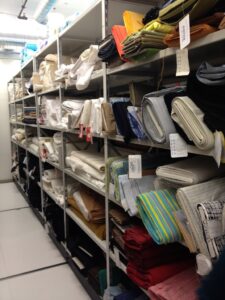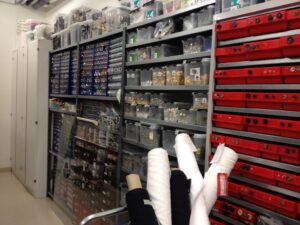SUS visits the opera
A few weeks ago, we at SUS were lucky enough to be taken on a tour of the opera! We also got to see a rehearsal performance by the Jury before it was ready for premiere.
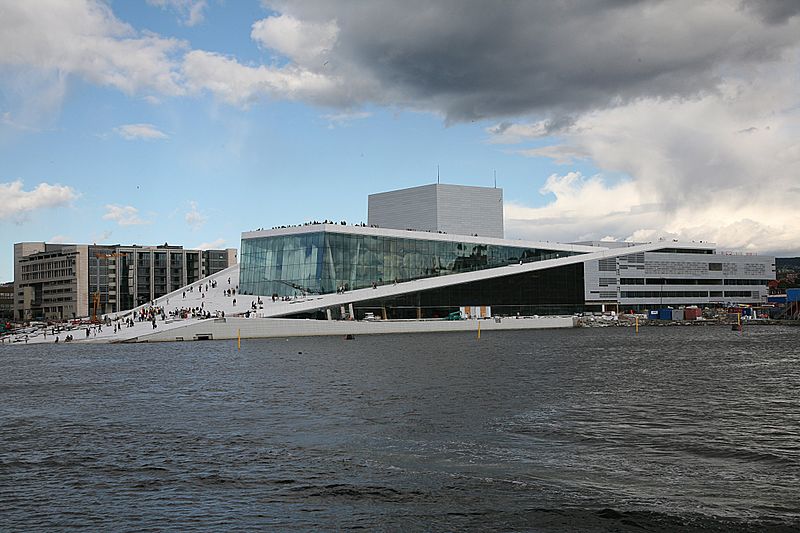
When we arrived at the opera right after school on a cold Friday in mid-November, the light was great and there was a lot going on on the opera roof. There was a photoshoot with colorful costumes and many people standing and watching. We quickly walked across the roof and back to the staff entrance. We had to sign in for the occasion, and were picked up by Hege Haagenrud who was going to show us her project: The Jury.
Even with missing parts of the performance, the Jury was a delight to watch. We also got to ask Hege and the dancers some questions about the performance.
What is the idea and concept behind the show?
What we want to do is create a show that focuses on children's aesthetic sense, and what children get out of the show. What their demands are, how they allow themselves to be fascinated and what a performance would contain if the children were to create one themselves. I've controlled what they're supposed to think and believe, so in a way it's a "kind of freedom" for them. It's meant to be entertaining, but also demand something of the children. There are parts at the start of the play that aren't clear yet, such as the voices that say they're bored and don't understand anything. That's the basic outline, and then it's broken by the children, who then start to take control of what they want to see.
Especially at the beginning, the smiles and hugs were very exaggerated and artificial. What was the point of that?
In the beginning, the children want a child-friendly performance, and then the dancers come in with blushing cheeks, bright colors on their dresses and they have to do the typical children's performance because that's what they think the children expect. In contrast, we have the eyes in the background that sit and watch, and which at first help to show that it's exciting. But then they start commenting "this is so typical", "we just saw this", "we realize that she's not dead", and so on.
Where does it get its name from?
The jury is about the children. In a way, they are the jury that will judge the performance.
Was it difficult to make, or was it an idea you had right away?
The idea came pretty quickly, but making it is quite difficult. It's taken a long time. First of all, it's the children between the ages of 2 and 10 that are difficult to film and get what you want without it being badly directed. You want it to sound genuine. We've interviewed them, just put them in front of the camera and got them to talk, and then they say a few sentences that might fit. We have many hours of film that don't end up being used. Suddenly the kids can get bored and leave after ten minutes. Then their working day is over. Otherwise, it's been great fun to work with.
Do you think the children will understand the show?
I think they will understand something. I don't think they will follow the link that this is the point of the performance. That's not the point either, the point is for the children to come up with inventions to be tested and for it to be a reflection of the audience sitting in the auditorium. "What if we do this? No, that didn't work so well. How about this? No, that didn't work either" and then they test it out and find something that works. The point is not that they should understand from A to Z, it's that they should sit and look at their module individually and see what the children think about it.
How much time have you spent?
The way me and the dramaturge work, we write the script first because it's such a narrative performance. And then we test something, and then we write more, and then we test and write more. It usually takes two years from the time I submit an application until it premieres. But we don't have a two-year rehearsal period, now we have five weeks. It's a long process from finding "this is what I want to talk about" to creating the concept, to developing it further into something that will become a script. The dramaturge and I started a long time ago, then the dancers came in five weeks ago. I started filming the children this summer. Some have grown teeth in the meantime that they didn't have when we started filming. We've had things like that to think about too.
I would just like to take this opportunity to thank Hege and the dancers for letting us come and watch the rehearsal, and to talk to them about the performance. Henning has written a "tanke SUS" about the Jury, you can read it here.
When we finished, we signed out again. This time we entered the main entrance, where we met the guide who would show us around.
The entrance area is a large and airy room with plenty of space under the ceiling. There are stairs up to the floors above, where you can look down on the entrance area. This is where you enter the two large stages. That's why there are pieces of oak in the ceiling, which not only looks cool, but also means that you can't hear any noise in the entrance area. This makes it much warmer to be many people in the room at a performance.
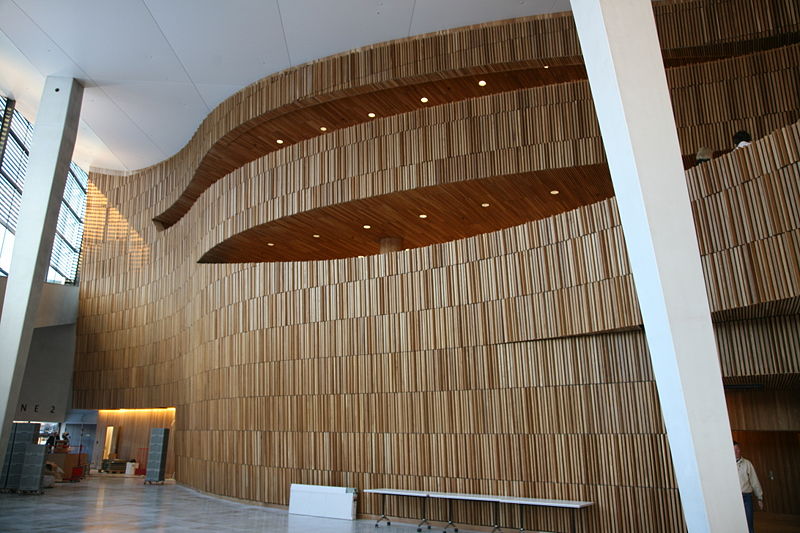
We got to see the two stages, the Main Hall and Stage 2. This is the main stage:
Everything is in oak, which is supposed to be good for the acoustics. There are 1,358 seats, all of which are unique (well, almost, there are apparently two seats that are the same) and all specially designed in Italy.
This hall has Norway's largest chandelier, which not only provides lighting, but also reflects sound from the stage. It consists of approximately 5,800 pieces of crystal glass.
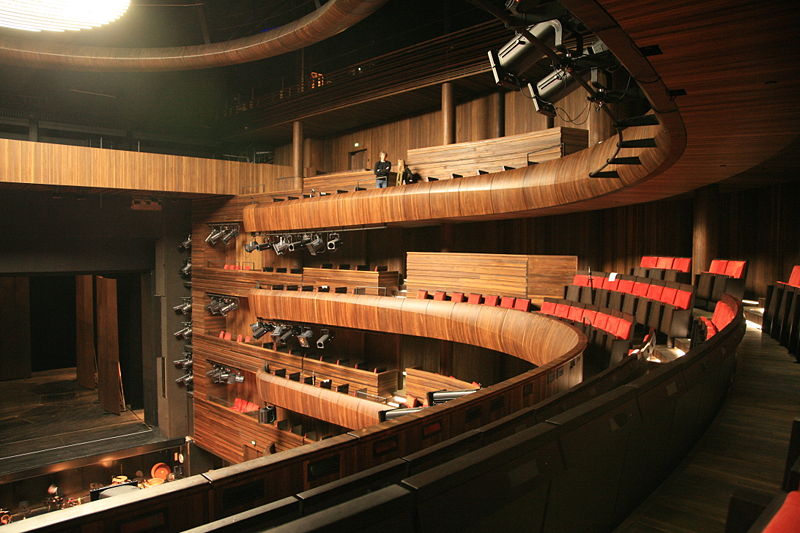
We also got to see some "insiders" backstage where they make sets and costumes. There are also many rooms where they rehearse a lot. Here are some pictures from the costume department:
All images are either taken from the opera's wikipedia page or taken by us at SUS.
